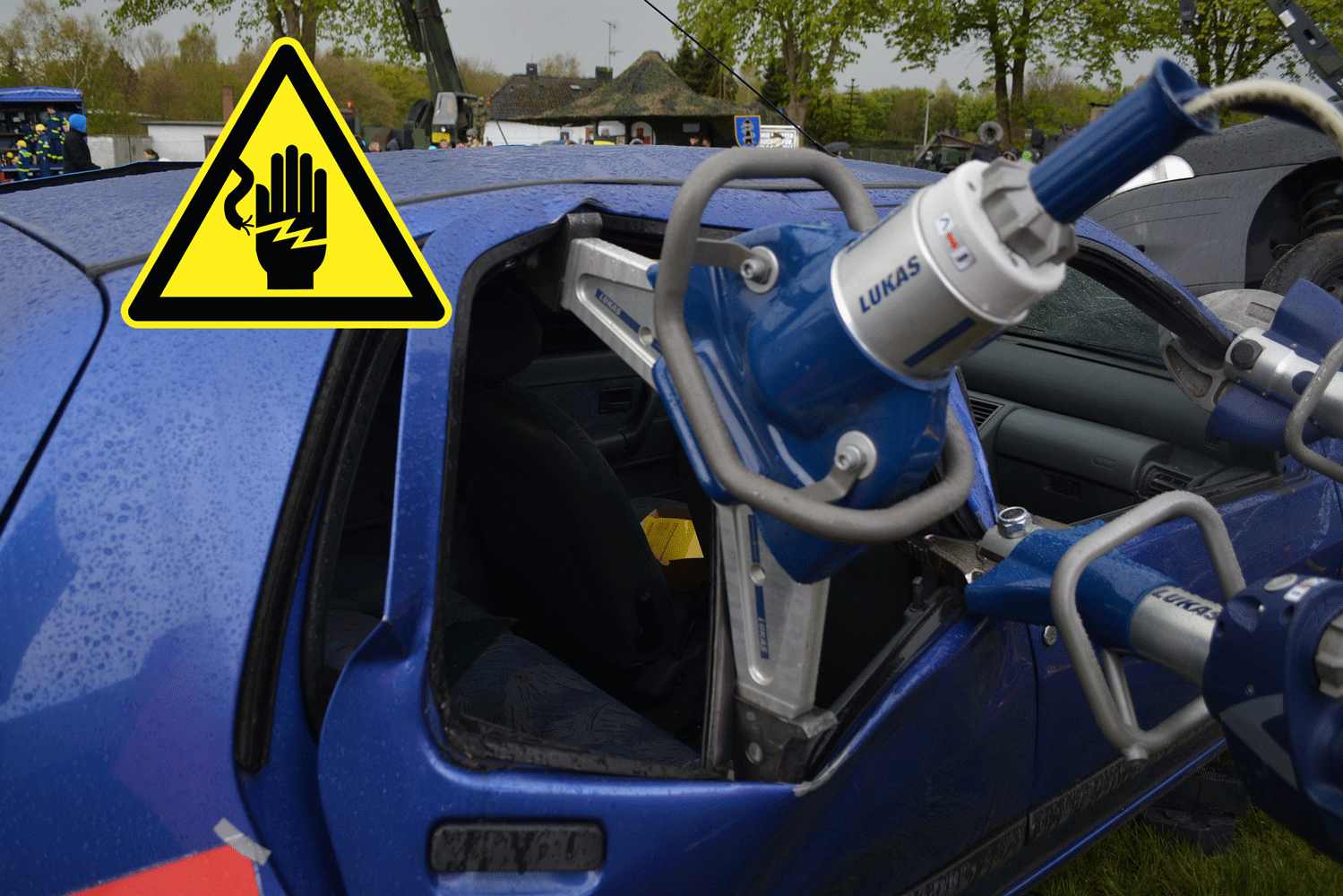With the growing number of electric and hybrid vehicles on the road, emergency responders must also prepare for new challenges. The high-voltage systems in electric cars can pose potentially life-threatening risks to emergency responders in the event of an accident involving an e-vehicle. Therefore, rescuers must follow safety rules to avoid being exposed to hazards. An important tool is the rescue card, which must be available for every electric vehicle to provide information about the location and course of (ev) high voltage lines and high voltage components in the vehicle type. A person among the rescue workers who has been sensitized to electrical engineering in a small (ev) high voltage training course can safely assess which protective measures and precautions must be taken to perform the rescue of persons or to safely extinguish and keep under control a burning electric car. Even though the danger basically comes from the high-voltage batteries, we recommend that rescue workers choose a high-voltage training course in vehicle technology, since they are usually dealing with the vehicle as such and not with the individual batteries.
Safely controlling electrical hazards during rescue
The training and instruction of rescue personnel ensures that rescue measures are carried out without endangering themselves and that adequate measures are initiated quickly at the scene of the accident. Now all (ev) high voltage components in an electric car can be recognized by clear markings and the orange color scheme. And the cutting and spreading tools used by firefighters at the scene of an accident for conventionally powered vehicles can also be used for electric cars. The procedure for rescuing people from an electrically powered vehicle is basically similar to that used on vehicles with internal combustion engines. Nevertheless, when working on electric cars involved in accidents, special precautions must be taken to minimize the risks to rescue personnel.
Electrical engineering knowledge helps save lives and protect rescue workers
Thanks to the rescue maps, rescue workers know where high-voltage components are positioned in the vehicle, where high-voltage cables run, and how they can use their tools safely. Electric vehicles are equipped with an interlock circuit as a control circuit that interrupts the circuit in the high-voltage system in the event of a serious accident. This technology helps increase safety for emergency responders. Nevertheless, rescuers should exercise caution, as the high dynamic forces and deformations involved in serious accidents mean that the electrical status of the (ev) high voltage system cannot be reliably assessed. This highlights the value of high-voltage sensitization (DGUV I 200-005 Level 1) by an electrical specialist for high voltage (ES HV, DGUV I 200-005 Level 2c), as safe rescue of persons from electric cars can only be ensured if the personnel have sufficient technical competence.
PS: Rescue data sheets are freely available and can be accessed via https://www.vda.de/de/themen/sicherheit-und-standards/retten-und-bergen/rettungsdatenblaetter.html.


Leave A Comment